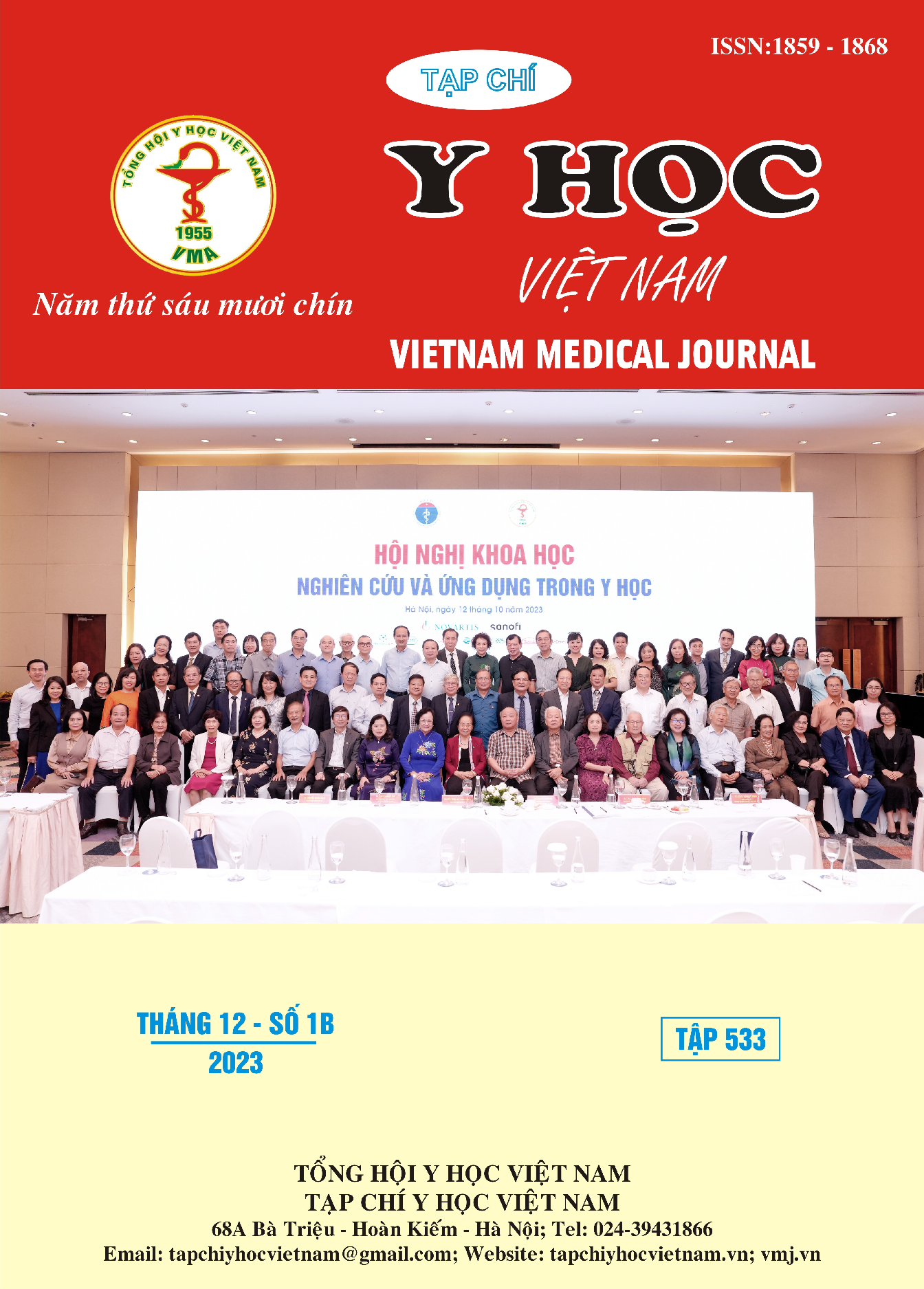MANAGEMENT OF URETERAL LEAK IN KIDNEY TRANSPLANT TRANSPLANTATION AT VIETDUC HOSPITAL
Main Article Content
Abstract
Objective: To identify the causes and early management of ureteral leaks in kidney transplant recipients. Patients and Research Methods: Clinical descriptions of four patients diagnosed with ureteral leaks through clinical examination and computed tomography scans. Study parameters included age, donor source, time of ureteral leak occurrence, ureteral stent insertion technique, immunosuppressive regimen, laboratory tests, treatment, and post-transplant outcomes.Results: Among the four patients with ureteral leaks, three received kidneys from living donors and one received a kidney from a deceased donor. Ureteral leaks occurred on postoperative days 1, 4, and 30, respectively. All patients underwent ureteral stent insertion into the bladder. The cause of the ureteral leaks was identified as ureteral injury due to direct trauma resulting in perforation. Urine creatinine levels were consistent with blood levels, and CT scans clearly visualized the site of the leak. Treatment involved re-suturing the transplanted kidney ureter to the native ureter. Kidney function returned to normal, and no signs of infection were observed. Conclusion: Ureteral leaks require early surgical intervention upon detection to avoid conservative treatments such as JJ stent placement or peritoneal drainage.
Article Details
References
2. Raman A, Lam S, Vassilaras. (2013) Influence of ureteric anastomosis in urological complication after KT. Transplantation proceedings, 43, 142- 144. http://dx.doi.org/10.1016/ j.transproceed. 2013.01.084
3. Lempinen M., Stenman J., Kyllönen L. et al (2015). Surgical complications following 1670 consecutive adult renal transplantations: a single center study. Scandinavian Journal of Surgery 2015, Vol. 104 (4), 254 –259
4. Lê Nguyên Vũ, Nguyễn Quang Nghĩa (2023). Kết quả phẫu thuật lấy thận nội soi bên phải để ghép tại bệnh việt Việt Đức. Tạp chí phẫu thuật nội soi và nội soi Việt nam, số đặc biệt 12 hội nghị ngoại khoa toàn quốc
5. Trần Ngọc Sinh, Chu Văn Nhuận, Dương Quang Vũ và cộng sự (2012). Kết quả phẫu thuật 238 trường hợp ghép thận tại bệnh viện Chợ Rẫy 1992-2012. Chuyên đề thận Niệu, Y học thành phố Hồ Chí Minh, 16 (3), 358-368.
6. Hoàng Khắc Chuẩn, Trần Trọng Trí, Nguyễn Thị Thái Hà và cs (2010). Nội soi hỗ trợ kỹ thuật Lich – Grégoir cải biên trên thận ghép tại bệnh viện Chợ Rẫy. Tạp chí y học Việt Nam, tập 375, tháng 11, số 2/2010, 520-527
7. Trịnh Minh Thanh, 2019. Kết quả áp dụng kỹ thuật nối niệu quản – bàng quang theo phương pháp Lich-Gregoir cải tiến trong ghép thận tại bệnh viện Bạch Mai. Luận án chuyên khoa cấp 2, ĐH Y Hà Nội
8. Đỗ Tất Cường, Bùi Văn Mạnh, Hoàng Mạnh An và cs (2012). Kết quả và một số biến chứng qua 98 trường hợp ghép thận tại bệnh viện 103. Tạp Chí Y-Dược Học Quân Sự Số Chuyên Đề Ghép Tạng – 2012
9. Hamouda M., Sharma A., Halawa A.(2018). Urine Leak After Kidney Transplant: A Review of the Literature. Başkent University, Experimental and Clinical Transplantation, 1, 90-95.
10. Tisserand B, Dore B, Touchard G.(2013) Long term outcom of renal transplantation: impact of surgical complications on graft survial. Progres en urologie, 23, 113-120. Doi: //dx.doi.org/10.1016/ j.purol.2012.09.016


